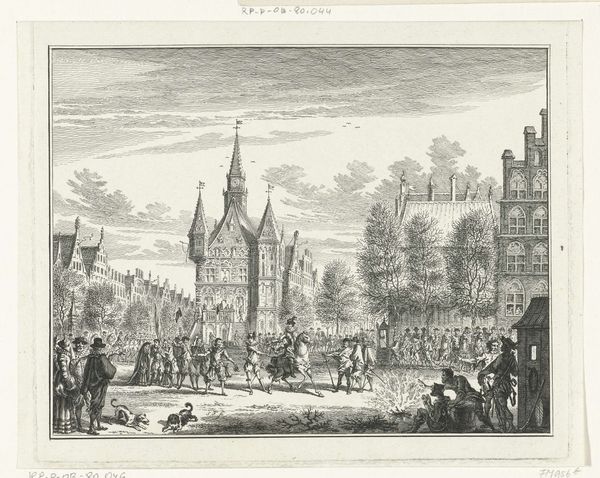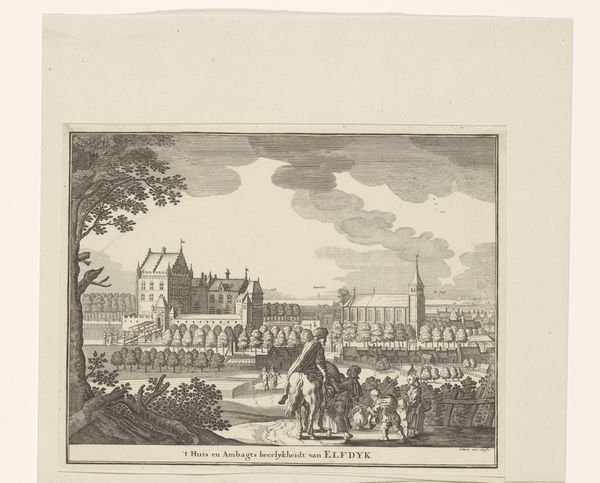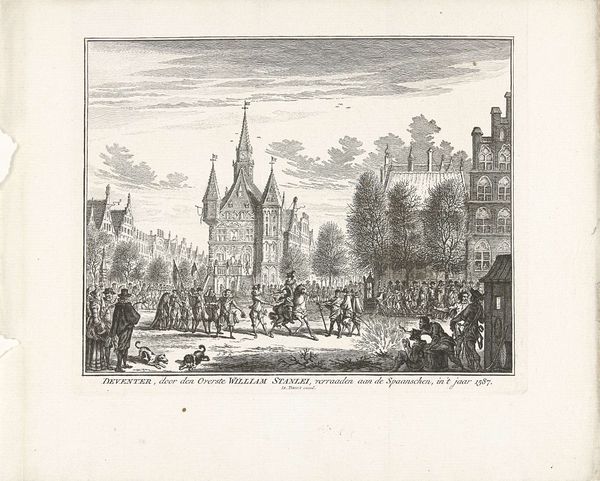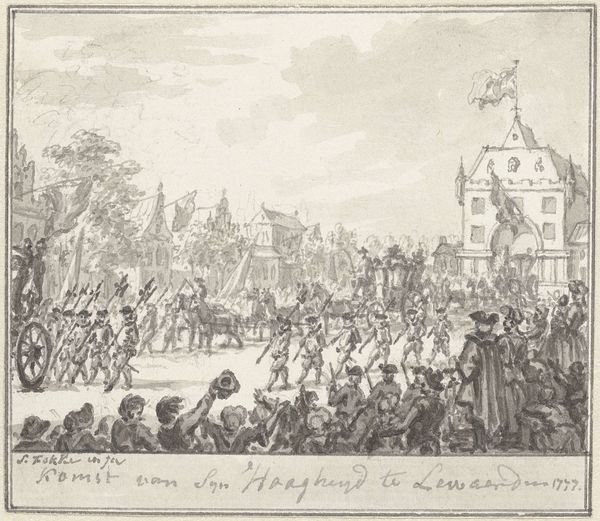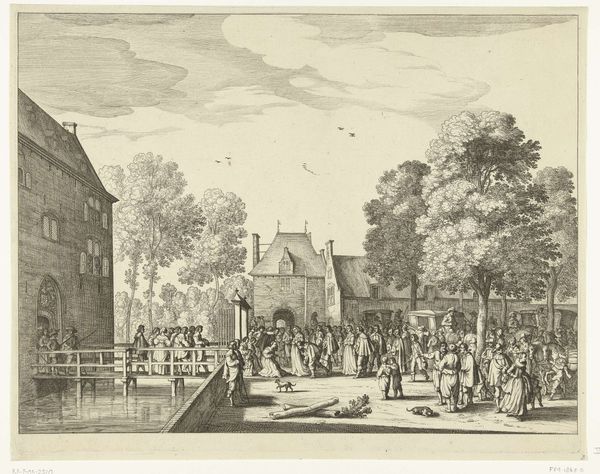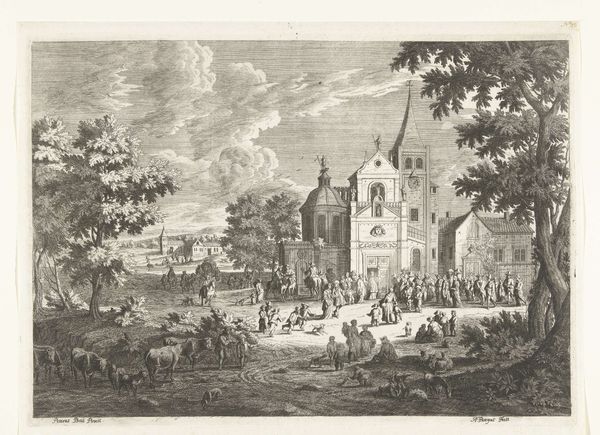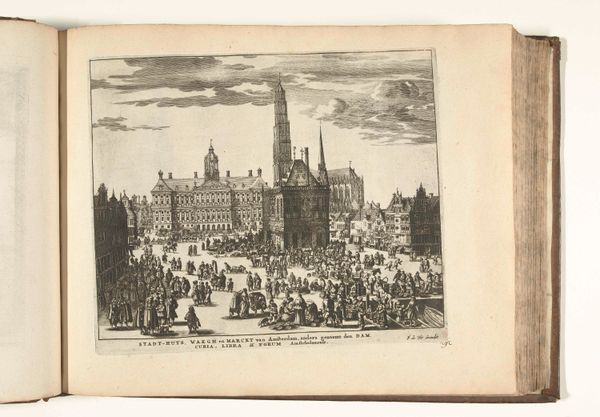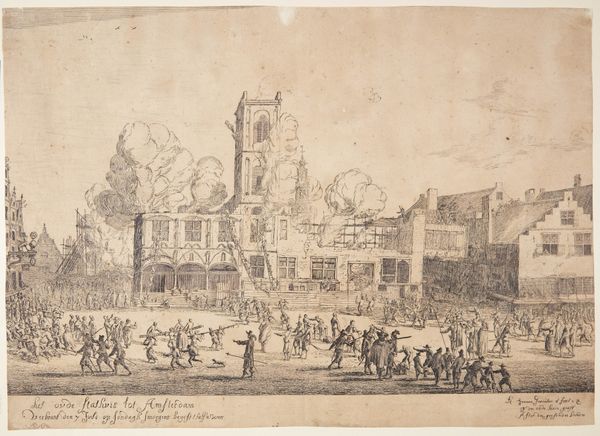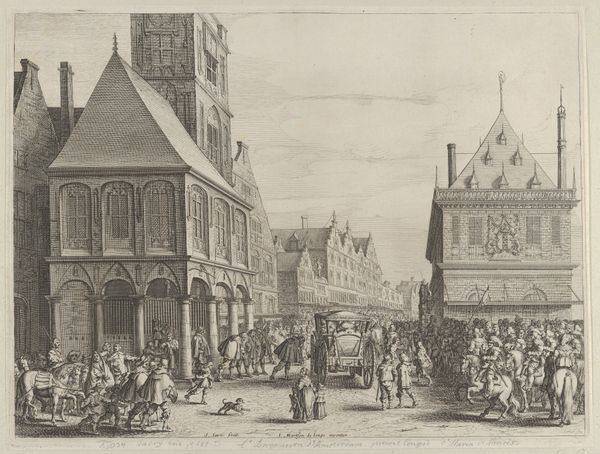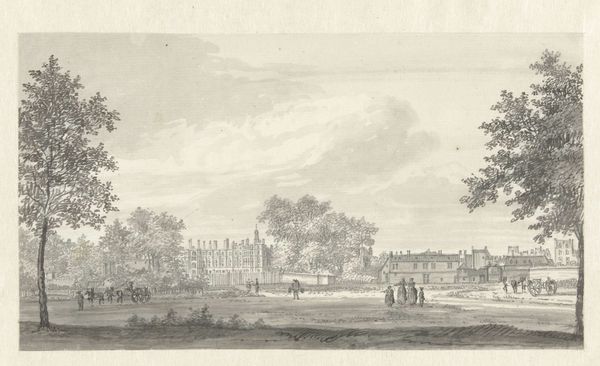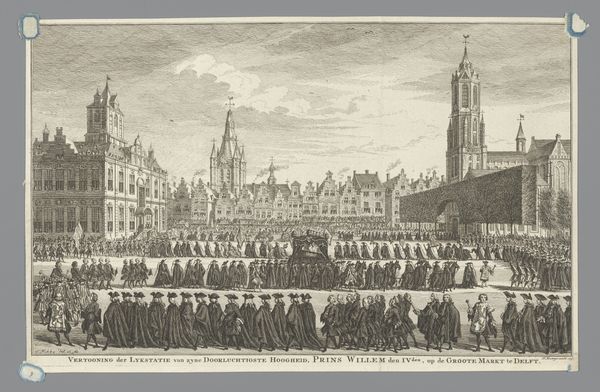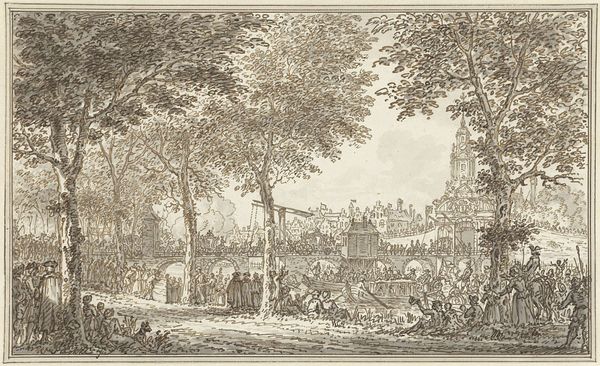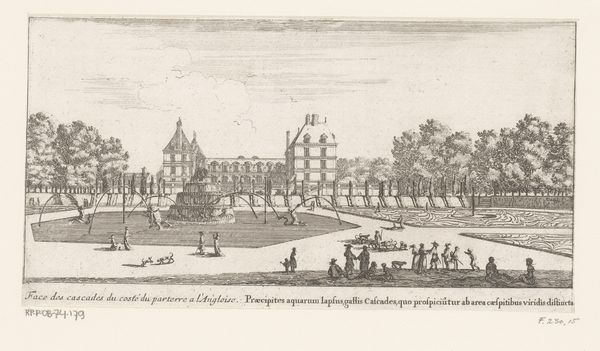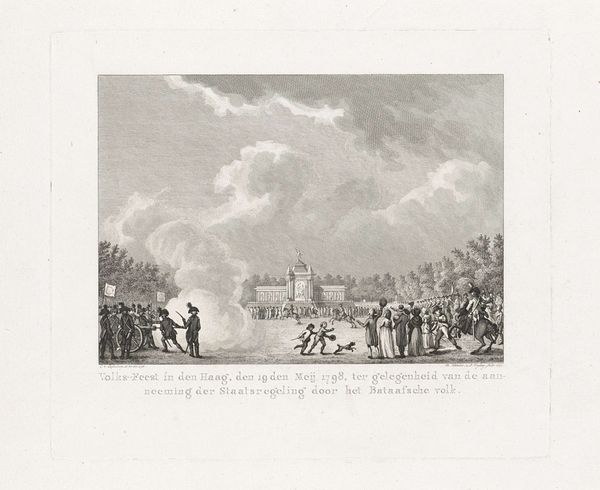
Deventer door de Engelse overste W. Stanley aan de Spanjaarden verraden, 30 januari 1587 1753
0:00
0:00
simonfokke
Rijksmuseum
drawing, etching, paper, pen
#
landscape illustration sketch
#
drawing
#
quirky sketch
#
baroque
#
mechanical pen drawing
#
pen sketch
#
etching
#
paper
#
personal sketchbook
#
sketchwork
#
pen-ink sketch
#
pen work
#
sketchbook drawing
#
pen
#
cityscape
#
history-painting
#
storyboard and sketchbook work
Dimensions: height 166 mm, width 209 mm
Copyright: Rijks Museum: Open Domain
Curator: Today we're looking at "Deventer door de Engelse overste W. Stanley aan de Spanjaarden verraden, 30 januari 1587," a pen and etching drawing on paper from 1753, by Simon Fokke. The drawing depicts the city of Deventer. Editor: It’s incredible how much detail Fokke was able to capture with such simple lines. I'm curious about the choice of medium, the etching with pen; what can we understand through its artistic merit? Curator: Observe how the hatching and cross-hatching define form and space. The composition creates a certain symmetry. What kind of structural framework does the artist set up? Notice the placement of the architectural structures, framing the event, and how the foreground elements provide an entry point into the historical scene. Editor: The artist has made interesting choices regarding the perspective and proportion, but that makes the buildings appear more grandiose! Curator: Indeed. The contrast between the buildings and the human figures directs the viewer’s eye through a systematic distribution of line and space. Could you describe the balance? Editor: The weight of the architectural structure on the left is cleverly offset by the cluster of figures on the right; otherwise, it would appear asymmetric. It’s the very intentional juxtaposition that establishes a structured field to highlight historical events. Curator: Precisely. By understanding these internal relationships within the art work, we decode and appreciate the artist's intent in portraying not only the historical narrative, but a sense of design and order. Editor: Thank you; I'm beginning to view artworks as compositional strategies and the distribution of forms to understand intention. Curator: My pleasure; it’s through understanding these structural relationships that we can truly decipher art's language.
Comments
No comments
Be the first to comment and join the conversation on the ultimate creative platform.
